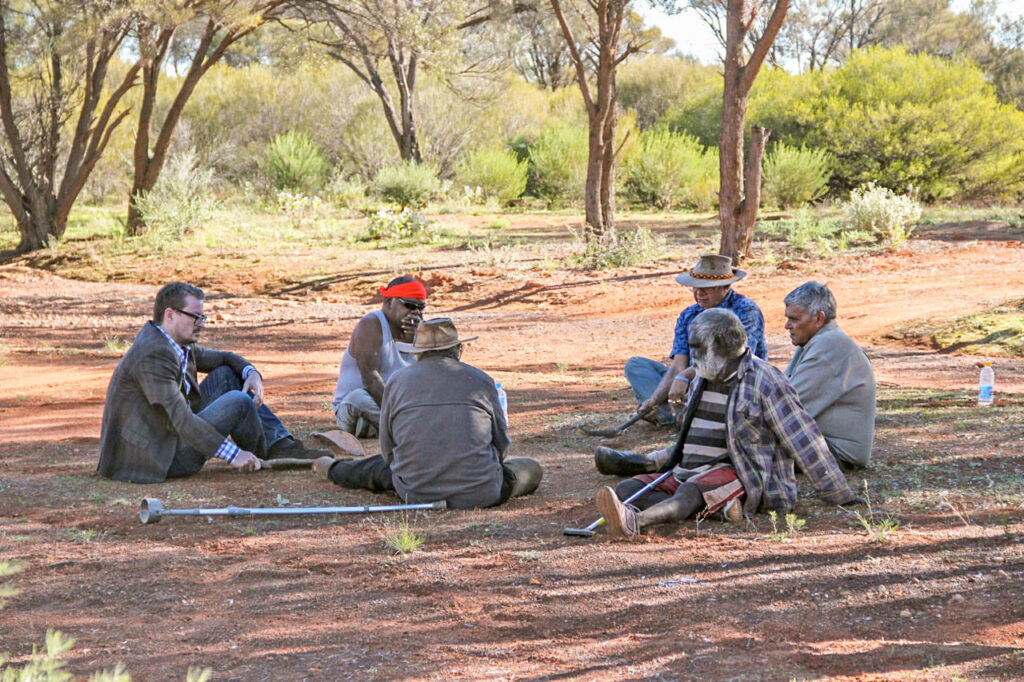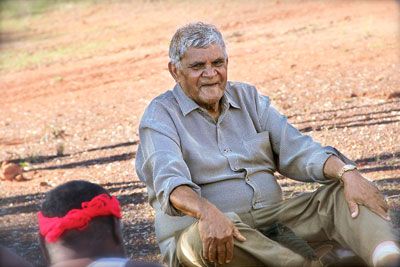Almost all living people outside of Africa trace back to a single migration more than 50,000 years ago
Australian Aborigines have long been cast as a people apart. Although Australia is halfway around the world from our species’ accepted birthplace in Africa, the continent is nevertheless home to some of the earliest undisputed signs of modern humans outside Africa, and Aborigines have unique languages and cultural adaptations.

Some researchers have posited that the ancestors of the Aborigines were the first modern humans to surge out of Africa, spreading swiftly eastward along the coasts of southern Asia thousands of years before the second wave of migrants populated Eurasia.
Not so, according to a trio of genomic studies, the first to analyze many full genomes from Australia and New Guinea. They conclude that, like most other living Eurasians, Aborigines descend from a single group of modern humans who swept out of Africa 50,000 to 60,000 years ago and then spread in different directions.
The papers “are really important,” says population geneticist Joshua Akey of the University of Washington, Seattle, offering powerful testimony that “the vast majority of non-Africans [alive today] trace their ancestry back to a single out-of-Africa event.”
Yet the case isn’t closed. One study argues that an earlier wave of modern humans contributed traces to the genomes of living people from Papua New Guinea. And perhaps both sides are right, says archaeologist Michael Petraglia of the Max Planck Institute for the Science of Human History in Jena, Germany, a co-author on that paper who has long argued for an early expansion out of Africa. “We’re converging on a model where later dispersals swamped the earlier ones,” he says.

A decade ago, some researchers proposed the controversial idea that an early wave of modern humans left Africa more than 60,000 years ago via a so-called coastal or southern route.
These people would have launched their migration from Ethiopia, crossing the Red Sea at its narrowest point to the Arabian Peninsula, then rapidly pushing east along the South Asian coastline all the way to Australia.
Some genetic studies, many on mitochondrial DNA of living people, supported this picture by indicating a relatively early split between Aborigines and other non-Africans. But analysis of whole genomes— the gold standard for population studies— was scanty for many key parts of the world.
Three large groups of geneticists independently set out to fill the gaps, adding hundreds of fully sequenced genomes from Africa, Australia, and Papua New Guinea to existing databases. Each team used complex computer models and statistical analyses to interpret the population history behind the patterns of similarity and difference in the genomes.
A team led by evolutionary geneticist Eske Willerslev of the University of Copenhagen zeroed in on Australia and New Guinea in what Akey calls a “landmark” paper detailing the colonization of Australia. By comparing Aboriginal genomes to other groups, they conclude that Aborigines diverged from Eurasians between 50,000 and 70,000 years ago after the whole group had already split from Africans. That means Aborigines and all other non-African people descend from the same out-of-Africa sweep, and that Australia was initially settled only once, rather than twice as some earlier evidence had suggested. Patterns in the Aboriginal DNA also point to a genetic bottleneck about 50,000 years ago: the lasting legacy of the small group that first colonized the ancient continent.
The majority of Aboriginal people here in Australia believe that we have been here in this land for many thousands of years. I am ‘over the moon with the findings.
COLLEEN WALL, A CO-AUTHOR ON THE WILLERSLEV PAPER AND ELDER OF THE ABORIGINAL DAUWA KAU’BVAI NATION IN WYNNUM, AUSTRALIA
In another paper, a team led by population geneticist David Reich of Harvard University comes to a similar conclusion after examining 300 genomes from 142 populations. “The take-home message is that modern human people today outside of Africa are descended from a single founding population almost completely,” Reich says. “You can exclude and rule out an earlier migration; the southern route.”
But the third paper, by a team led by Mait Metspalu of the Estonian Biocentre in Tartu, makes a different claim. Analyzing 379 new genomes from 125 populations worldwide, the group concludes that at least 2% of the genomes of people from Papua New Guinea come from an early dispersal of modern humans, who left Africa perhaps 120,000 years ago. Their paper proposes that Homo sapiens left Africa in at least two waves.
Reich questions that result, but says that his and Willerslev’s studies can’t rule out a contribution of only 1% or 2% from an earlier H. sapiens migration. Akey says: “As population geneticists, we could spend the next decade arguing about that 2%, but in practical terms, it doesn’t matter.” The most recent migration “explains more than 90% of the ancestry of living people.”
Still, changes in climate and sea level would have favored earlier migrations, according to a fourth Nature paper. Axel Timmermann and Tobias Friedrich of the University of Hawaii, Manoa, in Honolulu, reconstructed conditions in northeastern Africa and the Middle East, based on the astronomical cycles that drove the ice ages. They find that a wetter climate and lower sea levels could have enticed humans to cross from Africa into the Arabian Peninsula and the Middle East during four periods, roughly around 100,000, 80,000, 55,000, and 37,000 years ago. “I’m very happy,” Petraglia says. His and others’ discoveries of early stone tools in India and Arabia suggest that moderns did expand out of Africa during the early migration windows. But those lineages mostly died out.
The major migration, with more people reaching all the way to Australia, came later. “Demographically, after 60,000 years ago something happens, with larger waves of moderns across Eurasia,” Petraglia says. “All three papers agree with that.”
The studies show Aborigines’ ties to other Eurasians but also reinforce Australia’s relatively early settlement and long isolation. As such, they reaffirm its unique place in the human story. The continent holds “deep, deep divisions and roots that we don’t see anywhere else except Africa,” Willerslev says. That echoes the views of Aborigines themselves.
“The majority of Aboriginal people here in Australia believe that we have been here in this land for many thousands of years,” Colleen Wall, a co-author on the Willerslev paper and elder of the Aboriginal Dauwa Kau’bvai Nation in Wynnum, Australia, wrote in an email to Science. “I am ‘over the moon with the findings.”
